Guitar teacher and EasyEarTraining.com forum regular Bradley Mavin got in touch with us lately to share a great teaching exercise he’s found useful for developing his student’s ears – and his own! Being the generous soul he is, he’s given us a downloadable pack of tracks to put up here on the site. Read on for more information and to download the MP3s for yourself.
Guest author: Bradley Mavin
A DIY Approach: Develop your own ear training exercises
When I started playing guitar I had friends that were gifted with great ears. One friend did not know how he had this gift, but he could tell me the pitches of a buzzer on a shop door. He could write down the correct voicing of any chord played and perform a song in the correct key he heard on the radio over a week ago.
Another friend couldn’t tell me the names of the notes on the fretboard, but he could hear an E7#9 and label it (correctly) as a Jimi Hendrix chord. He could work out by ear and remember forty songs in one day!
They both amazed me with their hearing ability. I used to struggle with working out simple tunes and had trouble trying to tune my own guitar. I used to sit for hours trying to develop my ear. Sometimes I thought that it wasn’t for me and would never hear what I needed to be a great musician.
No one had the time to sit with me every day and play notes, intervals or chords. In those days we didn’t have the Internet, computer software, iPhones or the luxury of burning CDs.
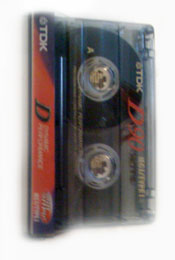
What I did have was a tape recorder and a lot of patience.
I would record myself playing random notes with a guitar and leave a few seconds before I would play another note. I would fill up a 45-minute side with notes, intervals and different types of chords. The next week I would go back and try to work them out by ear. I started simple and only played the open strings or notes that were only in the first four frets. If it was too difficult I would stick to recording a smaller number of notes til I could reliably find the right one, then gradually increase the range of notes included.
I tried to hurry the process but realized that didn’t help. I would just have to take it slow. It was frustrating playing notes into a tape recorder. I thought it was wasting my time and I wanted a quicker way. I didn’t realize at the time, but I was actually ‘meditating’ with those notes.
My ear was actually learning the sounds through repetition.
Modern ear training
Now living in a world full of technology it is easier to make up ear training tests yourself. We have the luxury of creating playlists full of MP3s with the ‘shuffle’ feature as our best friend. This is the easier way that I needed back when I was recording examples onto tapes.
Today I want to share a note-finding exercise with you. As a guitarist I have found this exercise to be the most important part of my daily routine. It is excellent for connecting your ear to your fingers, and I’m sharing these tracks with you so that they can help you similarly.
The notes in this pack cover the fretboard range of a 22-fret guitar. Click to download the .zip file containing all the MP3s you’ll need:
Each track lasts 6 seconds. A note is played and then there is enough time to find the note on the fretboard before the next track.
It can be a bit overwhelming to tackle everything at once, so it’s a good idea to start by making playlists for all the octaves of a particular note. For example, put all the C notes in one playlist and use it to learn to hear the different octaves.
How you make playlists will depend on your MP3 player or audio software, but here’s a few links which might help. How to make playlists with…
How to train with this pack
The notes on each track were recorded using Reason Pianos. You may wonder why a piano sound is used for a guitar exercise. Well, it has to do with the guitar having multiple strings. This means that a given note, for example C4 (or ‘middle C’) can actually be found in five places on the guitar! And each one sounds slightly different, based on the timbre of each string.
By using the piano as a prompt and your guitar as the response, you can practise in a variety of ways. For example:
- To begin with, stick to a particular string and focus on finding the right fret.
- Then mix in the other strings, perhaps trying to always find the lowest string which can match the note.
- Finally try to play back each of the matching notes every time, so that for a note like C4 you would respond with 5 different notes on your guitar after hearing the piano play.
Here’s a useful diagram of the note positions on guitar to help you get started (included in .zip file above):
Once you can find the notes you’ve been practising with easily: add more notes!
I find it a good idea to go through the cycle of keys (a.k.a. “circle of fifths”). Add in a new note each time you reach a consistency of about 95%, or 19 correct for every 20 you try.
The cycle of keys is as follows:
To achieve best results this exercise needs to be done every day. Spend five to ten minutes on it morning, noon and night and you’ll see your skills develop rapidly.
Other Uses
So far I’ve been talking mostly about guitar. But learning to find notes on your instrument by ear is an important skill for almost any instrumentalist, and this MP3 pack can be used for all instruments.
Because the tracks are so simple, it should be easy to think of other ways to practise with them which suit your instrument well. If you need an extra low octave (e.g. for bass guitar players), grab the extra pack below:
Finally, check out the ear training forums for more information and help. And be sure to let us know (in the comments below or on the forums) if you’ve found these tracks useful, or discovered a new way to train using them!
Brad Mavin is an experienced musician and guitar teacher based in Queensland, Australia who’s always looking for new ways to develop his musical ear. He teaches at TSS on the Gold Coast, Queensland, and performs regularly with the band Fat Tuesday.
Want more MP3 training packs? We’ve a few on the way, but let us know what you’re looking for!

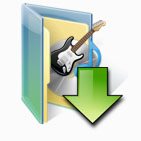
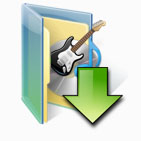
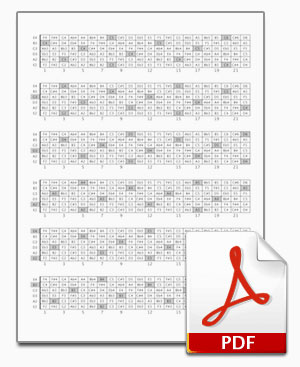
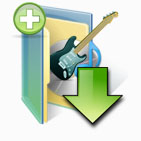






Your the Man, Mav. Keep up the educational ideas.
Yeah, this is awesome. You need to put more of this kind of content on this site. Keep this up.
Great work! thank you very much for sharing.